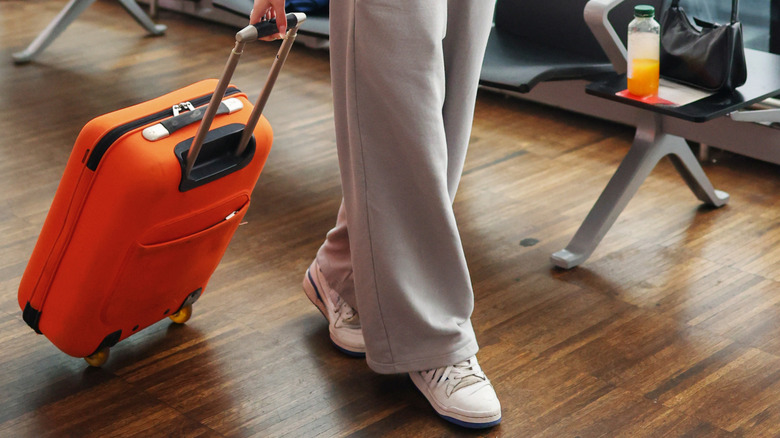Why You Should Not Pack Sweatpants For A Trip To Europe (And What To Bring Instead)
German fashion designer Karl Lagerfeld famously said, "Sweatpants are a sign of defeat." The common social attitude in Europe towards sweatpants is hardly this extreme, but Lagerfeld, nevertheless, was getting at some truth about European culture. There are quite a few cultural norms in Europe that may not be common knowledge to American travelers, from the dining blunder of leaving food on your plate to what you wear in public. Common clothing mistakes in Europe are by no means the end of the world, but they will likely peg you as a tourist. So, if you want to blend in, here's one tip: Save yourself some luggage space and skip packing sweatpants. Sweatpants, and athleisure clothing in general, are mostly worn in Europe for lounging at home or for athletic activities — you'll rarely see Europeans wearing them for eating out or going to museums.
While individual European countries have their own norms around dressing in public (in Italy, for example, tourists should avoid wearing shorts), the social distaste for wearing sweatpants in public is pretty widespread across the continent, with some nuances. Most agree that you can wear sweatpants if it's appropriate for the occasion. A Reddit user from Spain said "sweatpants [are] for housechores and errands." Another user from Belgium wrote on the AskEurope subreddit, "Of course we do wear athletic clothing in public. But only when doing something that can be considered athletic. Going to the grocery store or being a tourist cannot possibly be considered athletic." So, when you're exploring a new city and hoping not to stick out, it's best to don something that doesn't evoke gym wear.
Alternatives to sweatpants on a trip to Europe
Despite a few differences in social attitudes (like those towards athleisure), European dress standards aren't a totally different universe from what American travelers are used to. Travel blogger The Savvy Backpacker wrote, "After living in Europe and visiting multiple countries, I've found there isn't a huge difference between what the average 25-year-old American wears and what their European counterparts wear." He noted, however, that "styles do tend to be a little more 'put together.'"
Jeans are acceptable for most situations (other than going out to a fine dining establishment or a more formal event). You can still wear pants that have the ease of an elastic or drawcord waistband and a lighter feel. Pants made from lightweight, stretchy materials are a comfortable and stylish alternative to sweatpants. Look for materials like cotton blends or ponte knit, and styles with a straight-leg or wide-leg tailoring. In warmer climates, linen pants are a good option to keep cool without looking overly casual. Dresses are also very common and a go-to for easy chicness. When it comes to wearing a dress in Europe, style blogger Erin Busbee of Busbee Style suggested going for "[c]lassy, and sophisticated more than edgy and showy." She adds that "when wearing a mini dress, you can offset the shorter hemline with some coverage on top." Ultimately, dressing for Europe is about balancing comfort with a slightly elevated look, so think polished, not pajama-ready.

